OSAKA
THE KITCHEN OF JAPAN
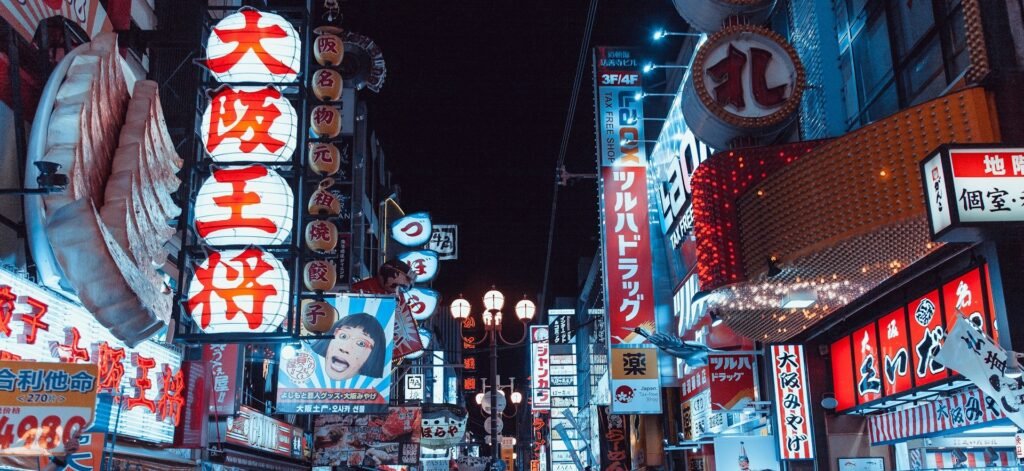
It helps keep this site running, and we appreciate your support!
Sightseeing
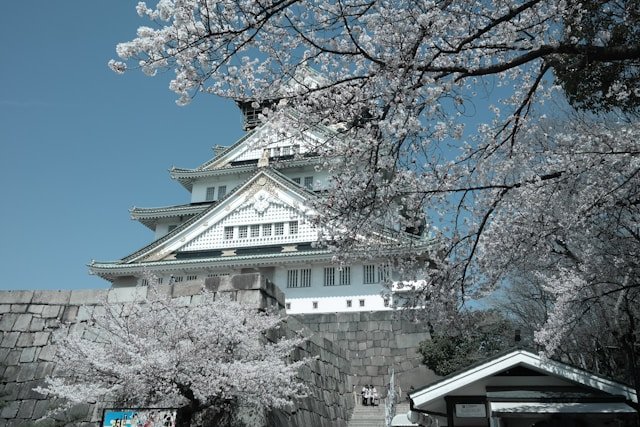
Osaka Castle
Standing tall with its green-tiled roof and golden ornaments, Osaka Castle is a majestic relic of Japan’s feudal era, built in the late 16th century by warlord Toyotomi Hideyoshi. The main tower houses a museum packed with artifacts, from samurai armor to old maps, telling the story of its battles and rebuilds. Surrounded by moats and stone walls, the castle park turns into a sea of pink cherry blossoms each spring, drawing crowds with cameras. Head up to the observation deck for a sweeping view of Osaka’s skyline—it’s a blend of history and beauty that hits hard.
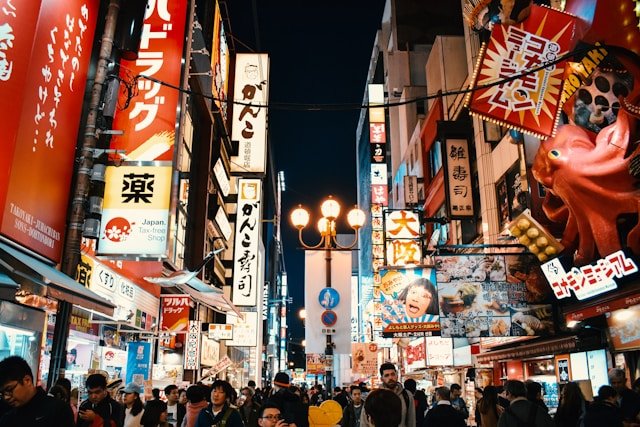
Dotonbori
This canal-lined stretch in Namba is Osaka’s loudest, wildest playground, where giant neon signs—like the famous Glico Running Man—light up the night and reflect off the water. It’s a nonstop parade of food stalls and restaurants dishing out local staples like okonomiyaki and kushikatsu, with touts calling you in for a bite. The energy’s electric, especially after dark when the crowds thicken and the vibe turns almost carnival-like. Whether you’re snapping pics or just soaking it in, Dotonbori’s raw, unfiltered chaos is Osaka at its most alive.
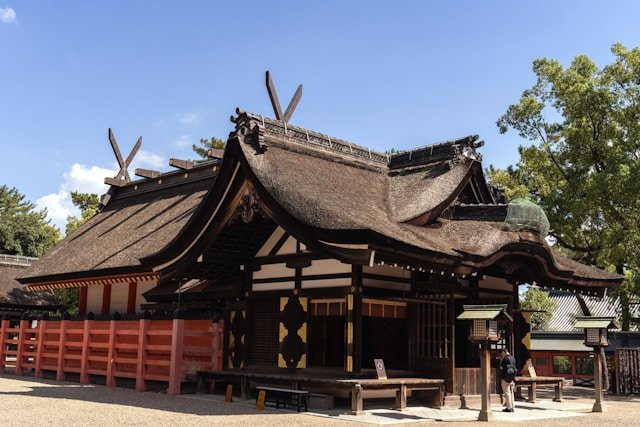
Sumiyoshi Taisha
Tucked south of central Osaka, Sumiyoshi Taisha is one of Japan’s oldest Shinto shrines, dating back to the 3rd century, and it feels like stepping into a quieter, sacred past. Its steep, red Sorihashi bridge curves over a pond, leading to wooden halls that skip the usual Chinese-inspired paint for a natural, earthy look. Locals flock here to pray for safety at sea, and the grounds host big festivals like the summer Sumiyoshi Matsuri. It’s a peaceful retreat from the city’s hustle, radiating an ancient calm you can’t miss.
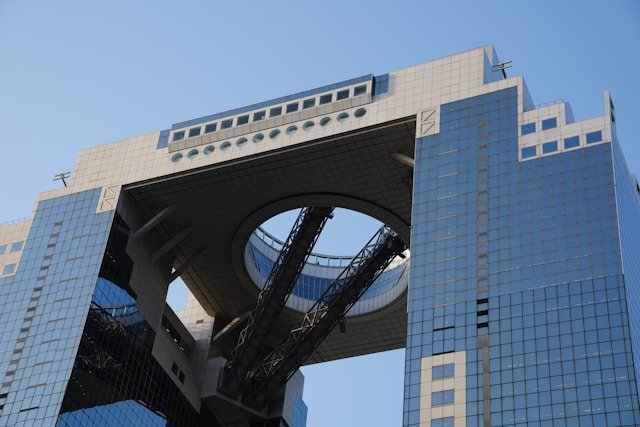
Umeda Sky Building
In the Kita district, this twin-towered marvel shoots up 173 meters, linked by a mind-bending “Floating Garden Observatory” that feels like you’re walking in the clouds. The glass escalators slicing through the air are a thrill ride on their own, and once you’re up top, the panoramic views stretch across Osaka’s sprawl—stunning at sunset when the city glows. Designed by architect Hiroshi Hara, it’s a bold, futuristic statement that contrasts with Osaka’s older roots, making it a must for anyone into architecture or epic vistas.
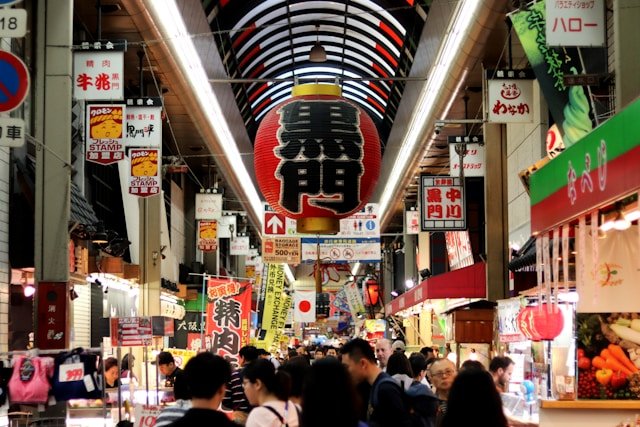
Kuromon Ichiba Market
Running since the Edo period, this narrow, covered market near Nippombashi is Osaka’s go-to for fresh eats, with over 150 stalls crammed into a lively stretch. Vendors grill scallops, slice sashimi, and fry up street snacks right in front of you, tempting you to taste as you go. It’s less touristy than some spots, buzzing with locals grabbing lunch or ingredients, and the seafood’s so fresh it practically jumps off the plate. From fruit skewers to matcha sweets, Kuromon’s a delicious, chaotic snapshot of Osaka’s food obsession.

Shinsekai
This retro district near Tsutenkaku Tower feels like Osaka froze in the early 20th century, with its gritty charm and throwback vibe. Built to mimic New York and Paris, it’s now a maze of narrow streets lined with quirky shops and eateries serving kushikatsu—deep-fried skewers you dip in communal sauce (just don’t double-dip!). The 103-meter tower offers a killer view, especially at night when the neon glows. It’s a bit rough around the edges, but that’s its appeal—a raw, nostalgic slice of old-school Osaka that’s weirdly addictive.
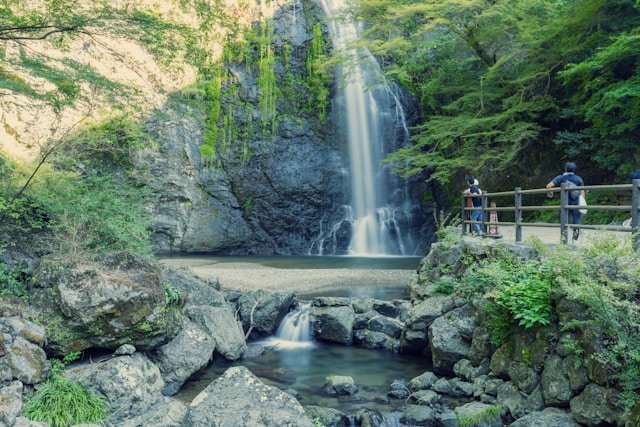
Minoh Park
Just north of the city, Minoh Park is a lush escape where a 3-kilometer trail winds through dense forest to the stunning Minoh Waterfall, a 33-meter cascade that’s pure magic in autumn when the maples turn fiery red. The path’s dotted with temples and teahouses, and you might spot wild monkeys if you’re lucky. Locals love it for picnics and seasonal hikes—spring cherry blossoms are a bonus. It’s an easy day trip that trades urban noise for nature’s quiet, a refreshing breather from Osaka’s bustle.
Activities
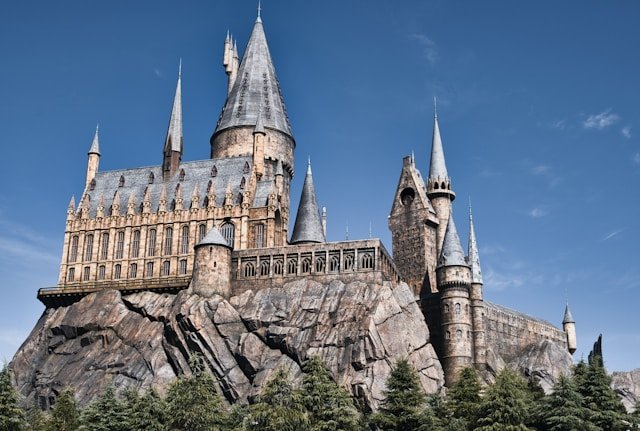
Universal Studios Japan
Dive into a world of thrills at Universal Studios Japan, a sprawling theme park in Osaka’s Bay Area that’s all about immersive fun. From the Wizarding World of Harry Potter, where you can sip butterbeer and explore Hogwarts, to the adrenaline-pumping Jurassic Park rides, it’s a cinematic escape for all ages. Seasonal events like Halloween horror nights or Super Nintendo World’s interactive games keep it fresh, while street performances and character meet-and-greets add spontaneous joy. It’s less about soaking in views and more about living the action—perfect for families or anyone craving a break from temples and towers.
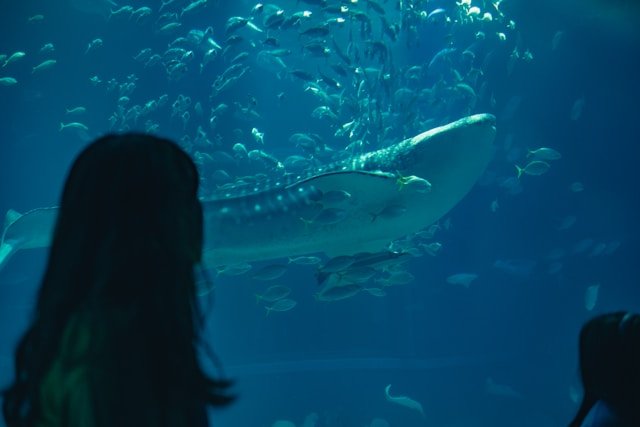
Osaka Aquarium Kaiyukan
Step into the underwater wonders of Osaka Aquarium Kaiyukan, one of the world’s largest aquariums, where you spiral through massive tanks teeming with marine life. The star is the Pacific Ocean exhibit, home to whale sharks and manta rays gliding overhead, but you’ll also meet playful otters, waddling penguins, and glowing jellyfish. Interactive touch pools let you feel starfish or sea urchins, and feeding shows bring the action up close. Located in Tempozan Harbor, it’s a hands-on deep dive into nature’s wild side, no sightseeing checklist required—just curiosity and a love for the sea.
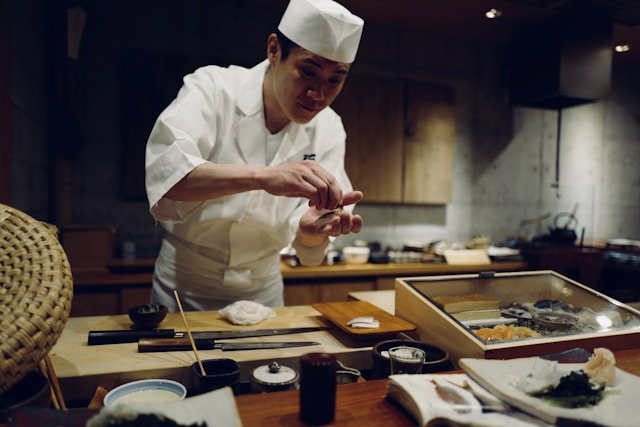
Food Tours: Dotonbori or Shinsekai
Join a food tour in Dotonbori or Shinsekai and eat your way through Osaka’s culinary soul, tasting why it’s dubbed Japan’s kitchen. In Dotonbori, you’ll sample sizzling takoyaki and okonomiyaki from street vendors, while Shinsekai offers kushikatsu—crispy skewers dipped in tangy sauce. Guides spill local secrets, like the best hole-in-the-wall spots or the art of not double-dipping, turning a meal into a cultural crash course. It’s loud, delicious, and messy—an active plunge into Osaka’s food obsession that’s all about flavor, not photo ops.
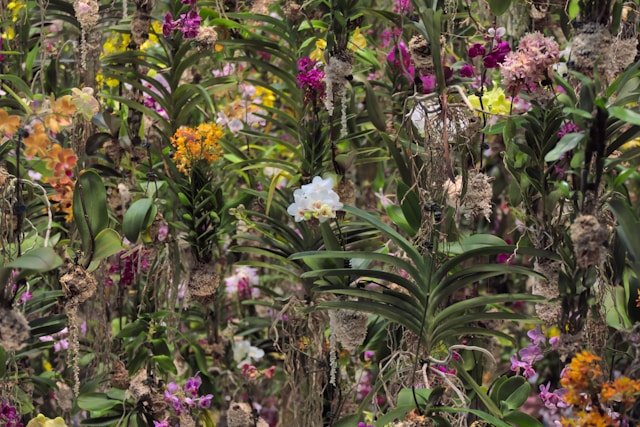
TeamLab Botanical Garden Osaka
Wander into the TeamLab Botanical Garden Osaka, an after-dark experience where art and nature collide in a mind-bending digital playground. Lights pulse through trees, flowers bloom in glowing patterns, and your footsteps trigger waves of color across the ground—it’s interactive magic. Set in Nagai Park, this isn’t a static exhibit; you’re part of the show, moving through a futuristic forest that shifts with every step. It’s a sensory adventure that swaps traditional sightseeing for a surreal, tech-driven twist on the outdoors.
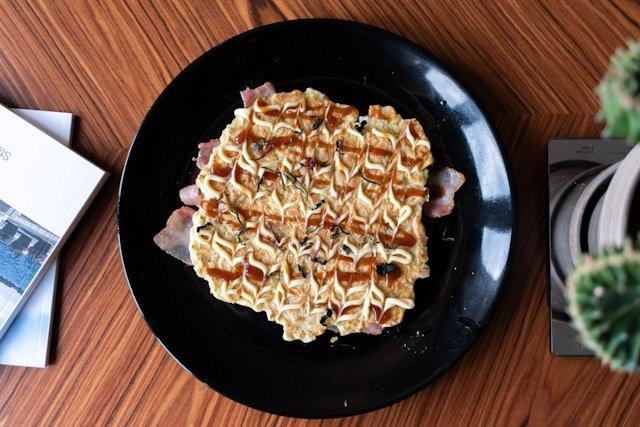
Cooking Classes (Sushi or Okonomiyaki)
Roll up your sleeves for a cooking class in Osaka, where you’ll master sushi or okonomiyaki with local chefs who know their stuff. Sushi lessons teach you to shape rice and slice fish just right, while okonomiyaki sessions have you flipping savory pancakes packed with cabbage and toppings. It’s hands-on from start to finish—kneading, chopping, and eating your creations in a small, friendly group. You’ll leave with recipes, skills, and a full stomach, turning a tourist stop into a tasty, practical memory of Osaka’s food culture.
Flights
Autumn (September to November) is another sweet spot, offering cooler weather, stunning fall foliage, and fewer tourists than spring, making it ideal for a calmer visit.
Summer (June to August) gets hot and humid, with occasional rain, but it’s cheaper and packed with lively festivals like Tenjin Matsuri—perfect if you don’t mind the heat.
Winter (December to February) is chilly and quiet, with low fares and a cozy charm, plus the bonus of nearby ski spots if you’re into that. Weigh your tolerance for weather extremes and crowds, and aim for spring or autumn for the best balance of comfort and beauty.
Hotels
Sotetsu Grand Fresa Osaka-Namba
Hotel the Lutheran
The Boly Osaka
Dining
This savory pancake is Osaka’s comfort food king, a thick, griddled mix of cabbage, batter, and toppings like pork or seafood, topped with a tangy sauce, mayo, and dancing bonito flakes. It’s great because it’s endlessly customizable—choose your add-ins or go wild with extras like cheese—and the sizzling, hands-on cooking at your table makes it a fun, messy experience. Every bite’s a warm, flavorful hug, blending crisp edges with a soft center, and it’s a local obsession that screams Osaka’s love for hearty, no-fuss eats.
These golf-ball-sized octopus bites, fried golden and drizzled with sauce and mayo, are Osaka’s street food superstar, born right in the city. They’re awesome for their contrast—crisp outside, molten and chewy inside with a chunk of tender octopus—and the way vendors whip them up fast on hot molds is a show in itself. Portable and cheap, they’re perfect for snacking on the go, packing a salty-sweet punch that’s pure joy with a cold drink in hand.
Skewers of meat, veggies, or even seafood, breaded and deep-fried to a crunchy finish, kushikatsu is a Shinsekai staple that’s all about bold, simple deliciousness. It’s great because the variety’s endless—think shrimp, quail eggs, or lotus root—and dipping them in a shared, savory sauce ties it all together (just don’t double-dip!). The greasy, satisfying crunch makes it a beer buddy like no other, capturing Osaka’s laid-back, indulgent side.
Thick udon noodles swim in a sweet, dashi-rich broth under a slab of fried tofu in this Kansai classic, and it’s a quiet standout among flashier dishes. It’s fantastic for its warmth and balance—the tofu soaks up the broth’s umami, while the noodles slurp down with a chewy bounce that fills you up without weighing you down. Subtle yet soulful, it’s a cozy pick that shows Osaka’s knack for turning basics into something special.
A thinner, green onion-packed cousin of okonomiyaki, negiyaki swaps cabbage for heaps of scallions, grilled crisp and brushed with soy sauce or a light glaze. It’s brilliant for its lighter feel and intense flavor—the charred onions bring a sharp, earthy kick that cuts through the batter’s richness, making every bite pop. Less heavy but just as tasty, it’s a local gem that proves Osaka’s food game thrives on variety and punch.
Tips
Osaka’s trains and subways are your lifeline, connecting hotspots like Namba, Umeda, and beyond with speed and ease—grab an ICOCA card to tap in and out without fumbling for tickets. Lines like the Midosuji subway or JR Loop get crowded at rush hour, so plan around 7-9 AM and 5-7 PM if you hate sardine vibes. Maps and signs often have English, but download a nav app like Google Maps or Hyperdia for real-time help; Kansai International Airport’s rail link drops you downtown in under an hour. It’s cheap and reliable—just keep an eye on your stuff in the bustle.
Osaka’s streets and stations can be tight, so a small suitcase or backpack beats dragging a monster bag through crowds or up stairs—elevators aren’t everywhere. Weather swings hard: humid summers (June-August) call for breathable clothes, while winters (December-February) need layers for the chill. Spring and fall are milder, but a light jacket’s clutch for breezy nights. Comfortable shoes are non-negotiable—think all that walking in Dotonbori or Minoh Park—and locals dress casual but neat, so you’ll blend in fine without going overboard.
While Osaka’s more card-friendly than rural Japan, cash is still king at street stalls, small eateries, and some shops—yen in small bills and coins keeps things smooth. ATMs at 7-Eleven or Japan Post work with foreign cards, but hit them up early; not every vendor takes plastic, especially in markets like Kuromon. Tipping’s a no-go—service is baked into the price—so don’t leave extra or you’ll just confuse people. Budget about 1,000-2,000 yen per meal for cheap eats, more if you’re splurging.
Osaka’s Kansai dialect is punchy and warm, and tossing out a “maido” (thanks) or “okini” (cheers) can spark grins from locals—they love when visitors try. English works in tourist zones, but outside that, it’s spotty, so a translation app like DeepL or a pocket phrasebook saves the day. People are chatty and helpful here, less reserved than in Tokyo, so don’t be shy to ask for directions or food tips—they might even walk you there if they’re free.
Osaka shines in spring (March-May) with cherry blossoms and mild days, though it’s busy and pricier—book early. Autumn (September-November) brings cool air and red maples, a quieter sweet spot for sightseeing. Summer’s steamy and rainy but cheap, with wild festivals like Tenjin Matsuri; winter’s cold but calm, great for deals and cozy eats like nabe. Pick based on your crowd tolerance and wallet—spring and fall win for weather, but off-seasons stretch your yen further.
